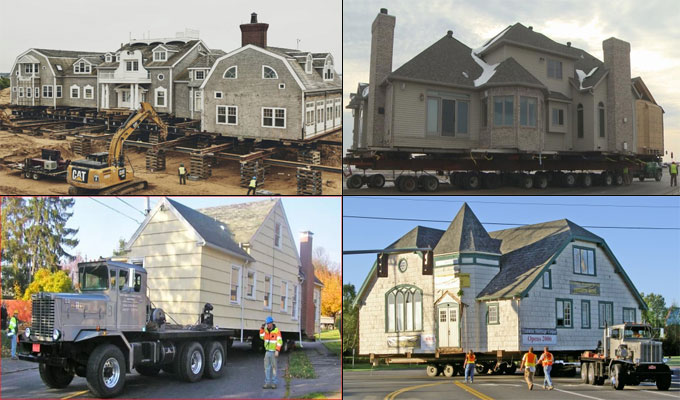
Relocation of Structures
Sometimes, it is required to move a building from one place to another location. This can be required for a number of reasons, like change of land, replanning of facility or even natural causes. In such situations, a process called Structure Relocation comes into play.
Relocation of a structure essentially involves three steps. The first is to disassemble the existing structure - you need to tear the building down systematically, preserving as much material and objects as you can. The second step is transporting the disassembled building blocks to the intended target location.
This may need the involvement of heavy transport support if the location is far away. Of course, if the location is within the same property then this step reduces next to zero. The last and the most important step is to reassemble the building back again at the target location using the same building blocks from the previous structure and maybe some extra materials.
Sometimes if the building is small enough and light enough, it can be picked up as a whole and transported to the new location with minimal disassembly and reconstruction necessary. If the move is within the same piece of property, the move can be done by rolling it on temporary rails or rollers. For long distance moves, generally heavy-duty flatbed trucks are used. Though in that case many complications may arise on the way, like roadside obstacles like narrow zones, and overhead obstacles like low-hanging branches and cables.
The need of building relocation is paramount in the areas where flooding is a constant issue. The threat of flooding may include:
1. Deep water (making it impossible to use the structure)
2. Flash floods (giving very short warning time)
3. High currents in the flooded waters
4. Wave actions that damage the property
5. Debris and silt carried by flood water
6. Corrosive effects of water logging
Structure Relocation Procedure:
A. Preliminary Analysis: In the very beginning, it has to be determined if the structure can be moved at all, and if so, how much disassembly and assembling work is needed. The moving company also needs to realize if their existing tools are cut up to the job, or if they need some other technology. In case of long-distance moves, the obstacles in the moving route needs to be considered as well. After this, you also have to analyze if the move is worth the estimated cost after all.
B. Disassembly Process: After the previous phase is all greenlighted, the actual work begins. The first job is to tear the building down while preserving it as much as possible. This begins at disconnecting utility lines (like water, electricity, gas etc.) from the building in a secure manner and tying them up so that they will not cause problems in the process.
Then, the excavation begins. At least 3 meters of space around the house is dug up; any trees and roots are removed, cut openings are made. In these openings, steel beams are inserted at strategic placings that are going to bear the weight of the structure. These steel beams are then leveled and shored up. After this, powerful hydraulic jacks come into play, lifting this whole assembly up and out of the ground. This has to be done carefully in perfect synchronization.
Sliding beams are then placed under the structure assembly. The house is shifted onto dollies, which in turn move it up onto the truck which is supposed to transport the structure to the destined location.
C. Reassembly Process: Provided everything goes okay on the route, the structure reaches the target location. Here, new foundation is laid for the structure according to the footing and weight of the building. Then the machinery on site takes care of lifting up the building from the truck and lower it onto said foundation. Some necessary cementing work is done to make sure the new structure sticks to the foundation. When bonding is achieved, utility lines are reconnected to the building, and voila! You have successfully moved a building.
Technical Considerations for Structure Relocation: The relocation of a structure very much on the structure itself. The size and weight come into consideration the most, being the determining factor in the required equipment. For example, small single-story wood buildings are the easiest to move. But larger or concrete structures are considerable easier to move.
This becomes vastly easier if the structure was originally constructed of prefabricated building blocks - they are meant to be flexible this way. The condition and integrity of the structure also are very important factors in this matter. Not only that, soil analysis needs to be carried out in the target location in order to find out if the location can actually hold the structure or not.


